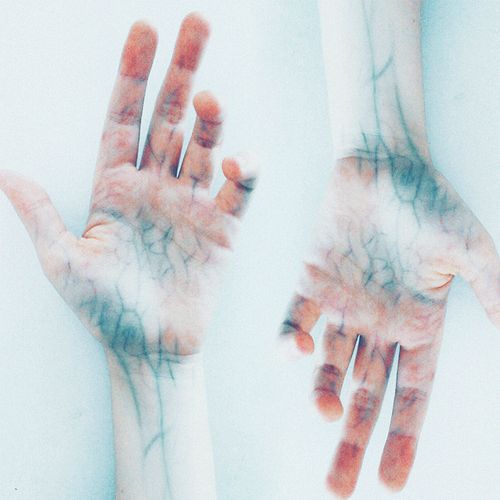Far more than just a cosmetic problem, varicose veins can cause pain that interferes with daily activities and may lead to serious health problems, such as blood clots and uncontrolled bleeding,
Good news: New treatments are safe and effective...involve minimal discomfort and downtime...and often are covered by insurance.
Contributing Factors
Normally, veins carry blood back to the heart quickly, helped by tiny interior one-way valves. However, when circulation through a vein is too slow, the vein becomes enlarged, twisted and engorged with blood-a varicose vein. As the vein worsens and/or more varicose veins form, the leg may become painful and swollen. (Spider veins are similar but much smaller and do not cause pain or other health problems.)
Genetics determine in large measure who gets varicose veins. Women are most susceptible because the female hormone estrogen weakens and relaxes vein walls. Up to 25% of women and 15% of men have varicose veins. Factors that can worsen the symptoms include…
- Menstrual cycle—estrogen levels are highest midway between periods.
- Pregnancy—estrogen rises. Also, the growing fetus presses on a big abdominal vein, slowing blood flow out of the legs.
- Hormone therapy or birth control pills—estrogen is the culprit.
- Hot weather—heat causes blood vessels to dilate.
- Prolonged standing—gravity encourages blood to pool in legs.
- Inactivity—the leg muscles don't contract enough to help pump blood onward.
- Being overweight—this increases gravity's effects.
- Leg injury—veins may be damaged by any type of accident.
- Aging—older vein valves are more prone to malfunction.
Self-Help Guidelines
Varicose veins that do not cause discomfort or worrisome symptoms do not need to be treated-though as a general precaution, you should bring them to your doctor's attention at your next checkup. To improve circulation and minimize symptoms…
- Exercise for at least 30 minutes daily. Include a lower-body workout, such as cycling, swimming or walking.
- Wear compression hose (sold at drug stores and medical-supply stores). Avoid clothes that are tight at the knees, waist or groin.
- Elevate legs above heart level for 15 minutes whenever they ache.
- When standing or sitting for long periods, tap your toes vigorously every few minutes to work calf muscles. Take frequent breaks to walk around. Avoid crossing your legs-this position does not cause varicose veins, but it can aggravate symptoms.
Treatment Options
If you experience pain and swelling despite following the self-help guidelines, get medical treatment to close the affected veins. Afterward, your body automatically reroutes blood into healthy veins. Insurance usually covers treatment if selfhelp measures have failed to relieve symptoms. See a vein specialist-an interventional radiologist, vascular Surgeon or dermatologist.
Referrals: American College of Phlebology, 510-346-6800, www.phlebology.org.
Treatment options...
- Endovenous ablation. For most patients whose varicose veins are moderate to severe, I recommend this new procedure performed with a laser or radio-frequency device. The doctor inserts a tiny tube into the vein, then heat energy from the device permanently seals the vein shut.
Cost: About $2,000 per leg. Advantages can include…
- Success rate of about 95% with low risk for complications (such as a blood clot or excessive bleeding).
- Performed in the doctor's office in about 30 minutes for laser. It may take 60 minutes for radio frequency.
- Requires only local anesthesia.
- Minimal discomfort, managed with nonprescription painkillers.
- Quick recovery--patients return to normal activities immediately and wear compression hose for one to two weeks.
- Good aesthetic results-bruising is minor and temporary, and veins disappear within a few weeks.
- Sclerotherapy. This office procedure works on small to medium-sized varicose veins and requires no anesthesia. The doctor injects veins with a solution that causes scar tissue to form. This closes the vein, which then fades. Some veins must be injected more than once.
Cost: About $300 to $500 per session.
On the horizon: Microfoam sclerotherapy Currently undergoing FDA testing, Varisolve is a foam that is injected into varicose veins, causing them to collapse. Varisolve is a stronger sclerosant able to treat larger and more problematic veins. The procedure may be available within two years.
Recommended: If your doctor suggests an older treatment called phlebectomy (vein stripping)-in which a long vein is removed through a series of small incisions- I suggest getting a second opinion. This in-hospital procedure involves more pain and a longer recovery time than today's advanced treatments.
Varicose Vein Complications
Watch out for these uncommon but dangerous complications…
- Skin sores. The skin around a varicose vein may break down, becoming discolored and hard. Over time, an open sore (ulcer) may form and become infected. If you notice signs of skin breakdown or develop a skin ulcer, see a vein specialist without delay.
- Blood clot. A clot in a varicose vein (phlebitis) can make nearby skin hot and tender...create a lump...and cause sudden swelling of the leg. If an associated clot forms in a deep vein, it may break off and travel via the bloodstream to the lungs. Called a pulmonary embolism (PE), this can be fatal. If you suspect a clot in your leg, go to the emergency room. If you have symptoms of PE-chest pain, shortness of breath, light-headedness, bloody cough-call 911.
- Bleeding. Due to increased pressure, a varicose vein may bleed profusely from even a minor injury--for instance, if you bang your leg or cut yourself shaving. Immediately elevate the leg above heart level, cover the wound with a clean cloth and apply firm pressure. If bleeding does not stop within a few minutes, call 911-a hemorrhage can be life-threatening.
